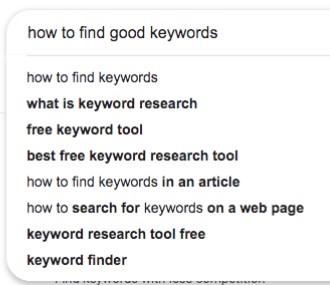Introduction
In the digital landscape, where the competition for online visibility is fierce, mastering the art of keyword research is a non-negotiable skill for anyone aiming to enhance their website’s search engine optimization (SEO) strategy. Understanding how to find keywords research for SEO is like having a map that guides you through the vast wilderness of the internet, helping you discover the exact terms and phrases your target audience is searching for. This guide will provide you with a step-by-step approach to uncovering high-impact keywords, optimizing your content, and driving more organic traffic to your website.
How to Do Keyword Research for SEO: how to find keywords

Imagine keywords as the compass guiding users to your digital doorstep. Learning how to do keyword research for SEO empowers you to align your content with these navigational cues. Here’s a comprehensive breakdown:
Understand Your Niche
Before diving how to find keywords, develop a deep understanding of your niche. What are the core topics? Who is your target audience? By grasping these fundamentals, you’ll be better equipped to generate relevant keyword ideas.
Brainstorm Seed Keywords
Seed keywords are the foundation of your keyword strategy. These are broad terms related to your niche. Start by listing several seed keywords that represent your website’s main themes. For instance, if you’re in the fitness industry, your seed keywords might include “weight loss,” “muscle gain,” and “nutrition.”
Leverage Keyword Research Tools
Keyword research tools are your treasure troves for uncovering valuable keywords. Tools like Google Keyword Planner, SEMrush, and Ahrefs offer insights into search volume, competition, and related keywords. Use these tools to expand your list of seed keywords.
Identify Long-Tail Keywords

Long-tail keywords are specific phrases that users search for. They might have lower search volumes but are highly targeted. For example, “healthy meal plans for weight loss” is a long-tail keyword. Integrate a mix of long-tail keywords into your strategy for more precise targeting.
Analyze Competition
Research competitors ranking high in your niche. What keywords are they targeting? Analyzing competitor keywords provides insights into gaps in your strategy and helps you identify potential opportunities.
Consider User Intent
Understanding user intent is pivotal. Keywords fall into three categories: informational, navigational, and transactional. Tailor your content to match the intent behind the keyword. For instance, if the user seeks information, provide in-depth guides or articles.
Gauge Keyword Difficulty
Some keywords are highly competitive, making it challenging to rank for them. how to find keywords difficulty metrics in research tools help you assess the competition. Prioritize keywords with a balance of search volume and manageable competition.
Create High-Quality Content
Keywords are your content’s backbone, but quality is king. Craft valuable, engaging, and informative content that resonates with your audience. Search engines reward well-structured, relevant content with higher rankings.

On-Page Optimization
Strategic keyword placement is crucial for on-page optimization. How to find keywords Include your target keyword in the title, meta description, headings, and throughout the content. However, avoid keyword stuffing, as it can harm your rankings.
Monitor and Refine
Keyword research is an ongoing process. Regularly monitor your keyword performance and adapt your strategy based on changing trends and audience preferences.
The Power of Long-Tail Keywords
Long-tail keywords are the unsung heroes of SEO. While seed keywords are vital, long-tail keywords offer a unique advantage. They cater to highly specific queries, capturing users deeper in the conversion funnel. Incorporating them into your strategy enhances your chances of attracting motivated visitors who are more likely to convert.
SEO and Content: A Symbiotic Relationship
SEO and content creation go hand in hand. Your content should seamlessly incorporate targeted keywords while providing value to your readers. Striking this balance not only pleases search engines but also keeps your audience engaged and coming back for more.
Q1 How many keywords should I target per page?
Rather than fixating on a specific number, focus on relevance and user experience. Aim for a mix of primary and secondary keywords that naturally fit within your content.
Q2 Can I rely solely on free keyword research tools?
While free tools offer valuable insights, investing in premium tools can provide deeper analysis and uncover hidden opportunities that competitors might miss.



Thank you a bunch for sharing this with all folks you
really know what you are talking approximately!
Bookmarked. Please additionally consult with my website =).
We may have a hyperlink exchange contract among us
Really Interested in this. Please contact us on our email (help@onlineseohelp.world).
I always was concerned in this subject and still am, appreciate it for posting.
Thank you for your precious time towards our content.
My relatives always say that I am killing my time here
at net, except I know I am getting knowledge all the time by reading thes fastidious articles.
We are always here to help you and give you more knowledge about SEO.
Thanks for the marvelous posting! I quite enjoyed reading it, you may be a great author.I will always bookmark
your blog and definitely will come back later in life. I want to encourage yourself to continue your great
posts, have a nice morning!
Thank you soo much for your support. I really appreciate that you give us your precious time towards our blogs. We will do our best for you interest.
I am really enjoying the theme/design of your blog.
Do you ever run ingo any web browser compatibilit problems?
A few of my blog readers hafe complained about my blogg not operating correctly in Explorer
but looks great in Opera. Do you have any tips to help
ffix this problem? ссылочное продвижение
Ok brother, how can i help you please tell me?
You Must read my more blogs on website.
I every time used to study post in news papers but now as I am
a user of web thus from now I am using net for posts,
thanks to web.
Greetings! Very useful advice within this post! It’s the little changes that will
make the most important changes. Many thanks for sharing!
I loved as much as you’ll receive carried out right here.
The sketch is tasteful, your authored material stylish.
nonetheless, you command get got an shakiness over that you
wish be delivering the following. unwell unquestionably come more formerly again since exactly the same nearly a lot often inside case you
shield this hike.
해외문자,국제문자,해외문자발송,국제대량문자발송전문,스팸문자,문자발송사이트,최저가,착한문자
스포츠중계 해외축구중계 nba중계 mlb중계 해외축구중계사이트 일본야구중계 EPL중계 프리미어리그중계 무료스포츠중계 해외스포츠중계 메이저리그중계, 스포츠365
My relatives every time say that I am killing my time here at net, except I know I am getting experience daily by reading such fastidious articles.
Thank you a lot for sharing this with all people you actually recognise what you
are talking about! Bookmarked. Kindly also visit my web site =).
We will have a link exchange contract among us 15 пълноспектърно cbd масло
You have a unique ability to bring clarity to complex topics. Great job on this post!
erviap
I think that is good service, if i receive streams with real people.
Top, really recommend it! i received all the foloowwrs in a matter of minutes and also got some extra one 🙂
They helped me when no one else would get the services i needed
It works and it’s fast, I recommend
The individuals who work for IG Take are very professional.,easy to speak too and very cooperative.
Very nice! I like the experience.
This service was fantastic! Best purchase yet! I haven’t experienced any dropped followers at all, through the 2 months I’ve had them. Also, the followers are real people, they are not bots. Helped out a lot would definitely recommend for anyone share with your friends and family!!!
GOOD AND CREATIVE.. CANT WAIT TELL MY HOMIES
very efficient and was easy process, thank you for the services
rené angelil jeune
sanaristikot net keskustelu
Feel the excitement of Lucky Jet’s engaging soundtrack.
how to get on to porn hub
Play Lucky Jet’s free demo mode and get hooked!
Wohh precisely what I was searching for, regards for putting up.
My website: anilingus.tv
Join the Lucky Jet community and win big!
The city is exploring additional options to make the bags available
at community and recreational centres. Those in dire financial straits can obtain free yellow bags where they currently receive food support.
replica bags online
replica designer
replica designer
replica designer
replica bags
replica bags online
fake bags
fake bags online
replica designer
replica bags online
fake bags online
replica designer
replica bags online
fake designer bags
fake bags online
fake bags
fake designer bags
replica designer
replica bags online
replica bags
replica designer
replica bags
replica designer
fake bags
replica bags
Take off to big wins with Lucky Jet!